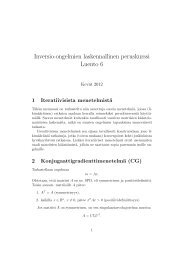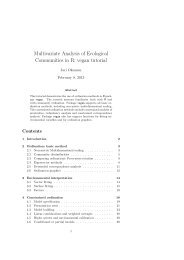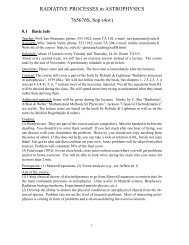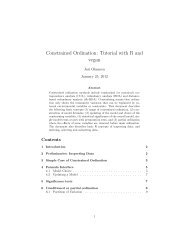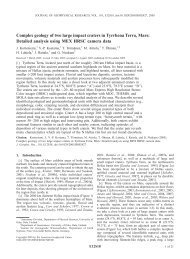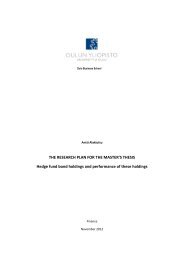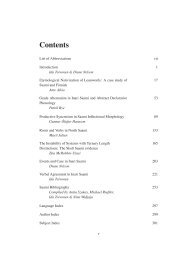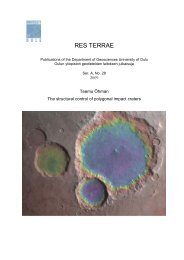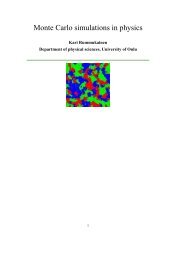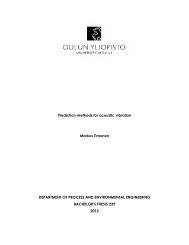Juha Köykkä - Oulu
Juha Köykkä - Oulu
Juha Köykkä - Oulu
- TAGS
- juha
- oulu
- cc.oulu.fi
Create successful ePaper yourself
Turn your PDF publications into a flip-book with our unique Google optimized e-Paper software.
Res Terrae, Ser. A 32, J. <strong>Köykkä</strong>, Sedimentology of the Mesoproterozoic Telemark basin-fills, South Norway: implications for<br />
sedimentation processes, depositional environments and tectonic evolution<br />
the Phanerozoic sedimentation models differ, at least partly, from the Precambrian<br />
models and systems, probably due to intensive weathering, rapid basin subsidence, and<br />
the lack of binding vegetation. Therefore, the established lithofacies scheme used in<br />
this thesis was modified for local sedimentation model purposes.<br />
The lithostratigraphic mapping and lithofacies analysis can be seen as an essential<br />
component of Precambrian sequence stratigraphy. Sequence stratigraphy allows an<br />
improved understanding of stratigraphic cyclicity and allogenic controls in sedimenta-<br />
ry basin-fills, and allows the recognition of single or multiple cycles within sedimenta-<br />
ry environments or within an entire basin (see Papers III and IV). The papers suggest<br />
that these cycles and their bounding surfaces are closely associated with changes in<br />
accommodation space and that they correspond with fluctuating water levels and<br />
changes in the base level. The limitations of the outcrop data in Precambrian sequence<br />
stratigraphy is mainly related to preservation potential and amount of data available<br />
(see Catuneanu and Eriksson, 2007; Catuneanu et al., 2009).<br />
The clastic petrofacies analysis can be an effective tool as supplementary data for<br />
geochemistry, and it was used in Paper II. The main limitations of the method on Pre-<br />
cambrian sedimentary rocks are biasing of the detrital framework and composition due<br />
to pseudomatrix, diagenesis, and multiple provenance sources, mixed transport history,<br />
paleoclimate, and metamorphosis. However, these problems can be partly avoided by<br />
using a combination of whole-rock geochemistry for tectonic reconstruction and de-<br />
trital zircons for provenance studies on the same sedimentary deposits, as in Paper II.<br />
The problems with the Gazzi-Dickson modal analysis method are mainly related to<br />
cases in which there is a true mineralogical difference in grain size (Ingersoll et al.,<br />
1983). In fact, no point counting methods can adequately address this problem. How-<br />
ever, the method does allow the maximization of source rock data, and counting of<br />
poorly sorted and coarse-grained sandstones is fast. As noted by Ingersoll et al. (1983),<br />
the modal composition does not change due to the simple breakage of grains; that is,<br />
the weathering of grains still produces the same minerals, no matter the grain size. The<br />
modal analysis in Paper II shows that modal analysis results correspond with the geo-<br />
chemical results and the tectonic evolution of the basin.<br />
Geochemistry still is an important tool in ancient basin analysis. In particular, the<br />
combination of facies analysis, clastic petrofacies analysis, and geochemical data of<br />
62



